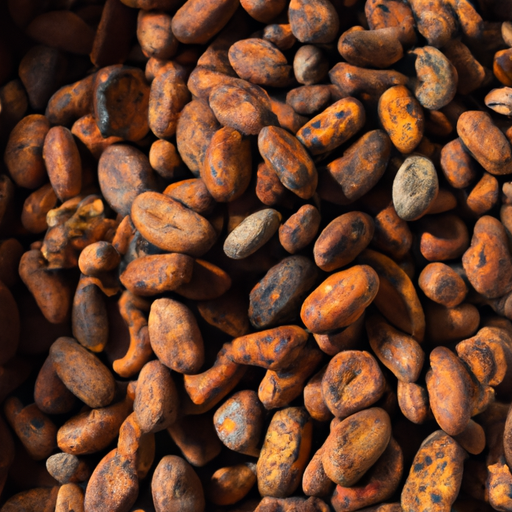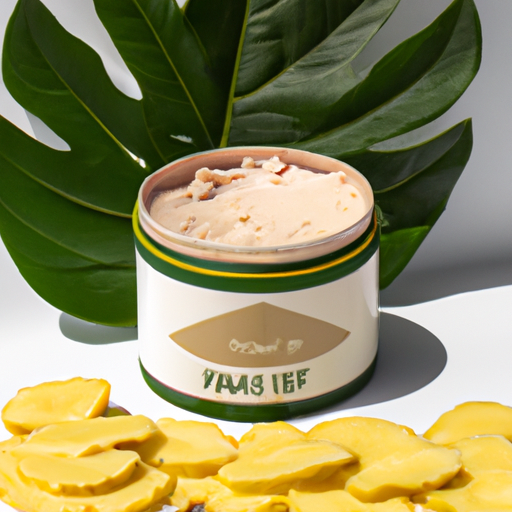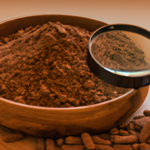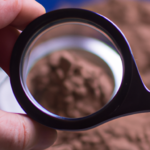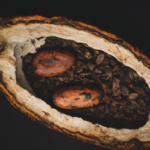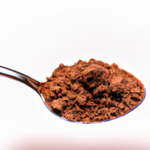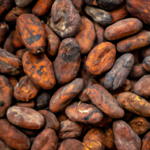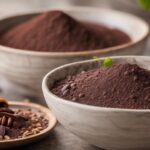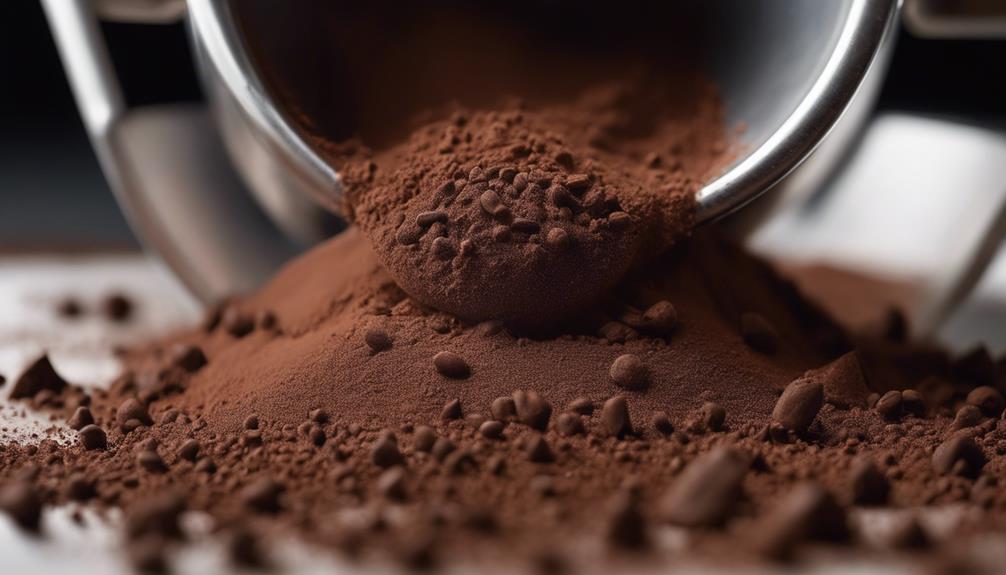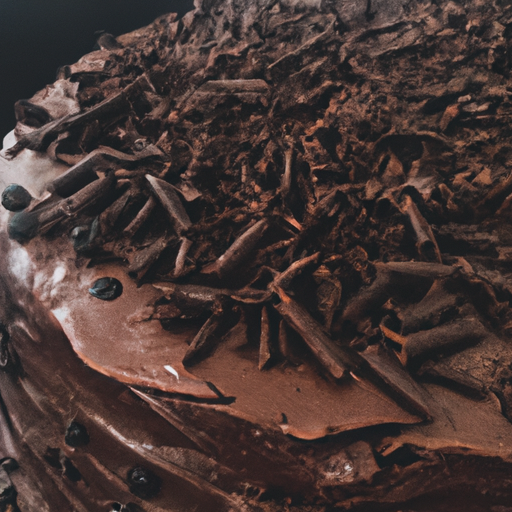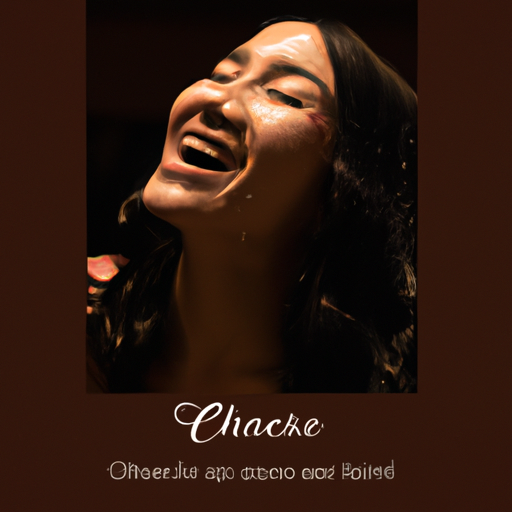I have always had an interest in the nutritional value of different foods, and one question that has been on my mind recently is the amount of magnesium found in raw cacao.
Magnesium is an essential mineral that plays a crucial role in our overall health and well-being. It is involved in hundreds of biochemical reactions in the body, including energy production, muscle function, and bone health.
Understanding the magnesium content in raw cacao can help us make informed choices about incorporating it into our diet.
In this article, we will explore the nutritional benefits of raw cacao, delve into the importance of magnesium for our health, and uncover the exact amount of magnesium found in raw cacao.
We will also discuss the various health benefits of consuming magnesium-rich raw cacao and provide tips on how to incorporate it into our diet.
So, let’s dive in and discover the wonders of magnesium-rich raw cacao!
Key Takeaways
- Raw cacao is a good source of magnesium.
- Consuming raw cacao can contribute to improved heart health, reduced risk of diabetes, and enhanced bone health.
- The recommended daily intake of magnesium is around 400-420 mg for men and 310-320 mg for women.
- Excessive intake of magnesium from raw cacao can lead to side effects such as diarrhea, nausea, and stomach cramps.
The Nutritional Benefits of Raw Cacao
You’ll be pleasantly surprised by the nutritional benefits of raw cacao. It contains a significant amount of magnesium, which is essential for muscle function and overall heart health.
Magnesium plays a vital role in our bodies. It helps regulate blood pressure, maintain normal heart rhythm, and support proper muscle and nerve function.
Understanding magnesium’s role is crucial. It is involved in over 300 enzymatic reactions in the body. Despite its importance, many people are deficient in magnesium. This deficiency can lead to various health issues such as muscle cramps, fatigue, and even heart problems.
Incorporating raw cacao into your diet is a delicious way to increase your magnesium intake and support your overall health. Understanding the impact of magnesium deficiency highlights the importance of including magnesium-rich foods like raw cacao in our daily lives.
Understanding Magnesium’s Importance in Our Health
Understanding magnesium’s importance in our health is crucial. Magnesium is involved in over 300 biochemical reactions in our bodies, including energy production, muscle and nerve function, and DNA synthesis. Unfortunately, magnesium deficiency is a common problem, with an estimated 75% of adults not meeting the recommended daily magnesium intake. This deficiency can lead to various health issues, such as muscle cramps, fatigue, and even heart problems.
Therefore, it is important to ensure we consume enough magnesium through our diet. One excellent source of magnesium is raw cacao. This superfood contains a significant amount of magnesium, making it a great addition to our diet.
In the next section, let’s explore the magnesium content in raw cacao and its benefits for our health.
Magnesium Content in Raw Cacao
The average magnesium content in raw cacao is an important factor to consider when assessing its health benefits. According to research, raw cacao contains approximately 64 milligrams of magnesium per 100 grams.
However, it’s important to note that the magnesium levels in cacao beans can vary based on factors such as the soil quality, growing conditions, and processing methods.
The average magnesium content in raw cacao
Get ready to be amazed by the abundant magnesium found in raw cacao!
Raw cacao is a rich source of magnesium, an essential mineral that plays a crucial role in various bodily functions.
The average magnesium content in raw cacao is around 64 milligrams per 100 grams. However, it is important to note that the processing of cacao beans can have an impact on the magnesium levels.
Roasting, for example, can reduce the magnesium content by up to 60%.
To meet the recommended daily intake of magnesium, which is around 400-420 milligrams for adult men and 310-320 milligrams for adult women, incorporating raw cacao into your diet can be beneficial.
Factors that can affect the magnesium levels in cacao beans will be discussed in the subsequent section.
Factors that can affect the magnesium levels in cacao beans
There are several factors that can affect the magnesium content in cacao beans. These factors include the variety of the cacao tree, the soil composition in which the cacao tree is grown, the climate conditions during the growth of the cacao beans, and the harvesting and processing methods used.
Each of these factors can have an impact on the magnesium levels in cacao beans. For example, cacao beans grown in magnesium-rich soil may have higher magnesium content compared to those grown in magnesium-deficient soil. Additionally, the processing methods, such as fermentation and roasting, can also affect the magnesium levels in cacao beans.
Understanding these factors can help us better appreciate the variations in magnesium content in raw cacao.
Moving forward, let’s explore the health benefits of consuming magnesium-rich raw cacao.
Health Benefits of Consuming Magnesium-Rich Raw Cacao
Indulging in raw cacao can significantly boost your magnesium intake, ensuring that you receive the numerous health benefits associated with this essential mineral. Magnesium is a vital nutrient that plays a crucial role in various bodily functions, including muscle and nerve function, blood sugar regulation, and blood pressure control. Incorporating magnesium-rich foods like raw cacao into your diet can contribute to overall well-being.
Here are some benefits of consuming magnesium-rich raw cacao:
| Reduces stress | Improves mood |
| Enhances energy | Supports digestion |
| Promotes heart health | Strengthens bones |
Magnesium is an important mineral that is often lacking in our diets. By incorporating raw cacao into your meals or snacks, you can easily increase your magnesium intake and enjoy these health benefits.
Now, let’s explore how to incorporate raw cacao into your diet to maximize its benefits without missing out on its rich magnesium content.
Incorporating Raw Cacao into Your Diet
When it comes to incorporating raw cacao into my diet, I’ve found various ways to enjoy its benefits.
- Adding it to smoothies and oatmeal
- Using it as a topping for yogurt and fruit bowls
There are endless possibilities.
- Discovering delicious recipes that include raw cacao, such as energy balls, brownies, and homemade chocolate bars
By exploring these different options, I’ve been able to effortlessly incorporate raw cacao into my meals and snacks, while reaping its numerous health benefits.
Different ways to consume raw cacao
One of the tastiest ways to enjoy raw cacao is by blending it into a smoothie. Here are five different ways to prepare raw cacao and the benefits of adding it to smoothies:
- Mix raw cacao powder with almond milk, a frozen banana, and a handful of spinach for a nutrient-packed green smoothie.
- Combine raw cacao nibs, dates, almond butter, and coconut water for a rich and creamy chocolate smoothie.
- Blend raw cacao powder with frozen berries, Greek yogurt, and a splash of honey for a deliciously fruity smoothie.
- Add raw cacao powder to a smoothie made with avocado, spinach, and almond milk for a creamy and nutritious treat.
- Mix raw cacao powder with frozen cherries, cashew milk, and a scoop of protein powder to create a post-workout recovery smoothie.
Incorporating raw cacao into smoothies is a great way to boost your magnesium intake and enjoy the rich flavor of chocolate.
Next, we will explore recipes and ideas for incorporating raw cacao into meals and snacks.
Recipes and ideas for incorporating raw cacao into meals and snacks
Get ready to tantalize your taste buds with these mouthwatering recipes and creative ideas for adding the irresistible richness of raw cacao into your meals and snacks. Raw cacao can be a versatile ingredient that adds a deep, intense chocolate flavor to a variety of dishes. From breakfast to dessert, there are endless possibilities to explore. Here are some recipe ideas to get you started:
| Recipe | Description |
|---|---|
| Raw Cacao Smoothie Bowl | Blend frozen bananas, almond milk, and raw cacao for a creamy, |
| nutrient-packed breakfast bowl. Top with fresh fruit and granola. | |
| Raw Cacao Energy Bites | Combine dates, nuts, and raw cacao in a food processor, then roll |
| into bite-sized balls for a healthy and satisfying snack. | |
| Raw Cacao Avocado Pudding | Blend ripe avocados, raw cacao, honey, and almond milk for a |
| smooth and indulgent dessert. | |
| Raw Cacao Chia Pudding | Mix chia seeds, almond milk, raw cacao, and sweetener of choice. |
| Let it sit overnight for a nutritious and delicious breakfast. |
Incorporating raw cacao into your meals and snacks not only adds a rich chocolate flavor, but also provides a good source of magnesium. However, there are other sources of magnesium in a balanced diet that can complement your raw cacao recipes.
Other Sources of Magnesium in a Balanced Diet
To ensure you meet your daily magnesium needs, incorporate various sources of this essential mineral into your balanced diet, such as raw cacao.
Magnesium is an important mineral that plays a crucial role in many bodily functions, including energy production, muscle contraction, and nerve function. Consuming foods rich in magnesium can provide numerous health benefits, such as improved heart health, reduced risk of diabetes, and enhanced bone health.
The recommended daily intake of magnesium for adults is around 400-420 mg for men and 310-320 mg for women.
In addition to raw cacao, other good sources of magnesium include leafy green vegetables, nuts and seeds, whole grains, and legumes. These foods can easily be incorporated into meals and snacks to help you meet your daily magnesium needs.
Transitioning into the next section about potential risks and considerations, it is important to note that while magnesium is essential for overall health, consuming excessive amounts may lead to adverse effects.
Potential Risks and Considerations
When it comes to consuming magnesium, it’s important to be aware of the potential risks and considerations.
Consuming too much magnesium can lead to side effects such as diarrhea, nausea, and stomach cramps.
Additionally, individuals with certain medical conditions, such as kidney disease or heart disease, should take precautions and consult with their healthcare provider before increasing their magnesium intake.
Possible side effects of consuming too much magnesium
Excessive intake of magnesium can lead to potential side effects, making it essential to be mindful of the amount consumed. While magnesium is an important mineral for our health, consuming too much can cause certain adverse effects. Here are three possible side effects of consuming excessive amounts of magnesium:
-
Digestive Issues: Consuming too much magnesium can result in diarrhea, nausea, and stomach cramps. These symptoms usually occur when the body is unable to absorb the excess magnesium, leading to an imbalance in the digestive system.
-
Low Blood Pressure: Excessive magnesium intake can cause a drop in blood pressure, leading to dizziness and lightheadedness. This can be particularly concerning for individuals already dealing with low blood pressure or taking medications to control hypertension.
-
Muscle Weakness: In some cases, consuming too much magnesium can cause muscle weakness and fatigue. This can interfere with daily activities and affect overall physical performance.
It is important to be aware of these potential side effects and consume magnesium in moderation. Moving on to precautions for individuals with certain medical conditions…
Precautions for individuals with certain medical conditions
Despite the potential benefits of magnesium, it’s important for individuals with certain medical conditions to exercise caution when consuming it. Proper dosage is crucial, as excessive magnesium intake can lead to adverse effects for some people.
Individuals with kidney problems, heart conditions, or gastrointestinal disorders should consult their healthcare provider before adding magnesium-rich foods, like raw cacao, to their diet. This is because these medical conditions can affect magnesium absorption and metabolism, potentially leading to imbalances.
Additionally, magnesium can interact with certain medications, such as antibiotics, diuretics, and blood pressure medications. These interactions can affect the effectiveness of the medications or cause unwanted side effects. It’s always best to consult with a healthcare professional to determine the appropriate dosage and ensure there are no potential interactions.
With these precautions in mind, let’s move on to tips for choosing and storing raw cacao.
Tips for Choosing and Storing Raw Cacao
To ensure the best quality, storing raw cacao in an airtight container will preserve its rich flavor and aroma. When choosing raw cacao, it’s important to look for high-quality products that are minimally processed and free from additives. Additionally, considering the source and processing methods can help ensure freshness and maintain the beneficial nutrients. Once you have your raw cacao, proper storage is essential to maintain its quality. Keep it in a cool, dry place away from direct sunlight, as exposure to heat and light can degrade its flavor and nutritional value. Below is a helpful table to guide you in selecting and storing raw cacao:
| Choosing Quality | Storing Freshness |
|---|---|
| Look for | Store in an |
| high-quality | airtight container |
| products | in a cool, dry |
| that are | place away from |
| minimally | direct sunlight |
| processed |
By following these tips, you can enjoy the benefits of magnesium-rich raw cacao in various recipes without compromising its freshness.
Conclusion: Enjoying the Benefits of Magnesium-Rich Raw Cacao
Indulge in the heavenly richness of raw cacao and savor the countless benefits it brings to your taste buds and well-being! Raw cacao is not only delicious but also packed with magnesium, a mineral that plays a vital role in various bodily functions. By enjoying magnesium-rich desserts made with raw cacao, you can not only satisfy your sweet tooth but also support your overall health.
Incorporating raw cacao into your diet is easy and versatile. Here are a few ideas to help you enjoy the benefits of magnesium-rich raw cacao:
- Add a spoonful of raw cacao powder to your morning smoothie for a delicious and nutritious boost.
- Use raw cacao nibs as a topping for yogurt or oatmeal to add a rich chocolate flavor.
- Get creative in the kitchen and experiment with raw cacao in your favorite dessert recipes, like brownies or energy balls.
So go ahead and treat yourself to the goodness of raw cacao, and reap the benefits of its magnesium content for a happier and healthier you!
Frequently Asked Questions
Can consuming raw cacao help improve sleep quality?
Consuming raw cacao can potentially improve sleep quality due to its high magnesium content. Magnesium helps regulate neurotransmitters that promote relaxation and enhance sleep. Additionally, it can have a positive impact on overall health.
Is there a recommended daily intake of magnesium for adults?
There is a recommended daily intake of magnesium for adults, which varies based on age and gender. Magnesium is essential for various bodily functions and has numerous health benefits, including improving sleep quality.
How does the magnesium content in raw cacao compare to other magnesium-rich foods?
Magnesium-rich foods provide numerous benefits for our health. They help in maintaining healthy bones, regulating blood pressure, and supporting muscle function. Including magnesium-rich foods in our diet is essential for overall well-being.
Can consuming raw cacao help reduce muscle cramps and spasms?
Consuming raw cacao can potentially reduce muscle cramps and spasms due to its high magnesium content. It may also enhance athletic performance. However, it’s important to note that individual results may vary and more research is needed to fully understand these effects.
Can consuming raw cacao help alleviate symptoms of migraines?
Yes, consuming raw cacao can help alleviate symptoms of migraines. Raw cacao is rich in magnesium, which has been shown to reduce the frequency and intensity of migraines. It can also improve sleep quality, further aiding in migraine relief.
What is the Magnesium Content in Raw Cacao and How Much is in a Specific Serving Size?
Raw cacao is a rich source of magnesium, with a serving size of 28 grams providing around 64 milligrams of the mineral. Magnesium content in raw cacao is beneficial for muscle function, energy production, and overall heart health. Including raw cacao in your diet can help meet your daily magnesium needs.
Conclusion
In conclusion, incorporating magnesium-rich raw cacao into your diet can be a delicious and beneficial choice.
Raw cacao is high in magnesium, which supports various aspects of our health. It can promote heart and bone health, as well as regulate mood.
By consuming raw cacao, you are giving your body a warm hug packed with essential nutrients that contribute to overall well-being.
To fully enjoy the benefits of raw cacao, make sure to choose high-quality products and store them properly to maintain their freshness.
So go ahead and indulge in the velvety goodness of raw cacao while reaping its numerous health benefits.

